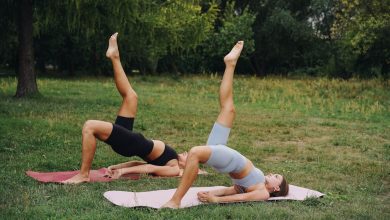The Connection Between Fitness and Stress Relief

Stress is part of life. Whether it’s work deadlines, personal issues, or everyday chaos, we all deal with pressure. But too much stress—especially without an outlet—can wear you down mentally and physically. That’s where fitness comes in. Regular exercise isn’t just about building muscle or losing weight. It’s one of the most effective tools for managing stress and improving overall well-being.
1. Exercise Changes Brain Chemistry
When you work out, your body releases endorphins—natural chemicals that act like mood elevators. You’ve probably heard of the “runner’s high.” That euphoric feeling is your brain reacting to physical exertion. Exercise also helps regulate cortisol, the primary stress hormone. While short bursts of cortisol are normal, chronic stress keeps it elevated. Regular movement helps bring it back to a healthy range.
2. Movement Clears Mental Clutter
Stress often makes your mind race. Thoughts loop. Worries spiral. But when you focus on moving—whether it’s lifting weights, going for a run, or flowing through yoga—you give your brain a break. Exercise shifts your attention from stress triggers to the present moment. It’s a physical form of mindfulness. The repetitive motions and focus on breath or form can act like meditation, giving your mind a reset.
3. Better Sleep Means Lower Stress
Fitness improves sleep quality, and sleep is a key part of stress management. When you’re active during the day, your body is more likely to fall into deep, restorative sleep at night. Better sleep means more energy, better mood, and lower reactivity to stressful events. It becomes a cycle—exercise helps sleep, sleep reduces stress, and low stress makes it easier to stay active.
4. Confidence and Control
When you’re consistently working out, you’re proving something to yourself: you can commit, you can show up, and you can improve. That sense of progress builds self-confidence. And confidence helps you handle stressful situations with more resilience. Exercise can give you back a feeling of control when life feels unpredictable. You might not be able to change the external pressures, but you can take charge of your own habits.
5. Community Support
Group workouts, fitness classes, or even a consistent gym routine can add a social element to your stress relief. Human connection is a natural buffer against stress. When you train with others—or just see familiar faces—you create a support system. Even small interactions during exercise can boost mood and reduce feelings of isolation, which often fuel stress.
Conclusion
Fitness and stress relief go hand in hand. Moving your body changes how your brain and nervous system respond to pressure. It gives you a release, helps you sleep, builds confidence, and connects you to others. You don’t need to be an athlete or spend hours in the gym. A walk, a quick session at home, or a yoga class can be enough to take the edge off and keep stress in check. Make movement a part of your routine, and your mind will thank you just as much as your body.



